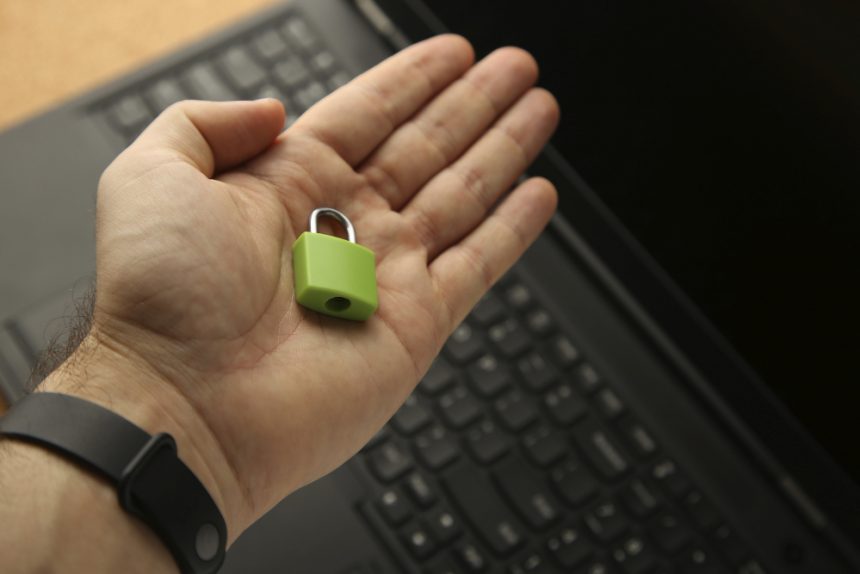In today’s hyper-connected world, digital security is no longer a concern only for large companies or IT professionals. Each of us, as everyday users of smartphones, laptops, social platforms, and online services, holds valuable personal information that cybercriminals are constantly seeking to exploit. While the headlines often focus on large-scale data breaches or sophisticated cyberattacks, the reality is that most online threats succeed not because of highly complex techniques, but because of small oversights we make in our daily habits. Fortunately, this also means that consistent, mindful changes in our behavior can greatly reduce our chances of becoming victims.
Digital safety is not primarily about fear—it’s about resilience. Just as we lock our car doors or check that the stove is turned off, practicing everyday habits of digital security offers peace of mind and a proactive relationship with technology. With each small action, we place barriers between ourselves and potential threats, creating a layered shield that grows stronger with repetition.
Building a Culture of Everyday Digital Security
The foundation of digital security begins with adopting simple, consistent habits that anyone can follow. These actions not only protect your accounts and devices but also empower you to feel more in control of your digital life.
1. Strengthen Your Passwords
Weak or repeated passwords remain one of the biggest vulnerabilities exploited by attackers. Move beyond simple combinations of names, birthdates, or “123456” and embrace unique, complex passwords. A strong password is usually longer, unpredictable, and a mix of characters. Even better, use a password manager to handle the complexity for you—this way you only need to remember one master password while the manager generates and stores the rest securely.
2. Activate Two-Factor Authentication (2FA)
Adding an extra layer of protection means that even if someone guesses or steals your password, they still need a second code—usually from your phone, email, or authentication app—before accessing your account. Apply 2FA on essential services such as email, online banking, cloud storage, and social media. These are often the keys to your wider digital identity, and locking them down is one of the most effective steps you can take.
3. Keep Your Devices Updated
Software updates are not just about new features; they are often critical patches that fix vulnerabilities actively being exploited. Hackers thrive on outdated systems. Make it a habit to run updates promptly for your phone, computer, apps, and even connected devices like smart TVs or routers.
4. Recognize Red Flags in Emails and Messages
Phishing remains one of the most common online threats. Learn to pause before clicking links in unexpected emails or messages. Watch out for subtle errors such as misspelled company names, unusual sender addresses, or urgent requests for personal information. When in doubt, go directly to the official website rather than engaging through a suspicious link.
By weaving these habits into our daily interactions with technology, we shift digital security from being an occasional checklist item into a natural part of how we think and act every day. And the benefits go beyond just avoiding threats—these practices make your digital life more organized, less stressful, and easier to manage in the long run.
Practical Strategies That Turn Awareness Into Action
Understanding digital threats is only the first step; true protection comes when we bring knowledge into routine practice. The good news is that these practices are simple, accessible, and require no advanced technical skills.
1. Monitor App Permissions
Many apps request access to data and features they don’t truly need. Regularly review permissions on your phone and computer to limit unnecessary exposure. For example, a flashlight app probably doesn’t need access to your contacts or microphone.
2. Limit Personal Information You Share Publicly
Oversharing may seem harmless, but it can provide cybercriminals with details they use to guess passwords or security questions. Be thoughtful about what you post on social media—your birthday, address, travel plans, or even your pet’s name can become useful to someone with malicious intent.
3. Use Secure Backup Systems
Mistakes happen—devices get lost, stolen, or corrupted. Regularly backing up important files ensures that even in the worst-case scenario, your personal material is safe. External hard drives and reputable cloud storage provide easy solutions for creating reliable backups.
4. Verify Websites Before Entering Sensitive Data
Before entering credit card details or passwords online, double-check that the website address starts with “https://” and matches the official site of the service you are using. Fraudulent websites often mimic legitimate ones with small spelling differences or unusual domains.
5. Lock Devices When Not in Use
Something as simple as setting a PIN, fingerprint, or facial recognition on your devices can block unauthorized access if your device falls into the wrong hands. Always lock your computer and mobile phone when stepping away, even for a short while.
6. Be Selective With Networks You Connect To
Public Wi-Fi can be a haven for cyber threats. Avoid logging into sensitive accounts when connected to unsecured networks. Consider using a VPN (Virtual Private Network) for added privacy when you need to access public Wi-Fi.
Making Security a Way of Life
The most important realization is that maintaining digital security is not about one-time, dramatic measures—it’s about consistency. Just as brushing your teeth daily prevents long-term health issues, small security steps add up over time to create a resilient digital lifestyle.
If a single password is compromised, the fact that you enabled two-factor authentication may protect your account. If your device is lost, encryption and backups will reduce the damage. If you accidentally click a suspicious link, your habit of keeping software updated might shield you from harm. Each practice is a layer, and together they form a strong network of defenses that adapt to changing tactics used by cybercriminals.
Ultimately, digital security is a shared responsibility that belongs not only to experts but to everyone who uses the internet for communication, work, banking, shopping, or simply connecting with loved ones. By making these protective steps second nature, we build a culture of resilience—allowing us to engage confidently with technology, knowing we have the awareness, tools, and habits to keep ourselves safe.
Final Thought
Digital security doesn’t need to be intimidating or complicated. In fact, the most powerful protections come from the simplest routines. Strengthen your passwords, enable two-factor authentication, stay updated, beware of suspicious links, limit unnecessary exposure, and safeguard your devices. Together, these daily actions transform digital safety from a burden into a natural, empowering practice.
Online threats will continue to evolve, but so too can your resilience. By cultivating mindful habits now, you are not just protecting your data—you are preserving your identity, finances, and peace of mind in a world that increasingly depends on digital trust.












